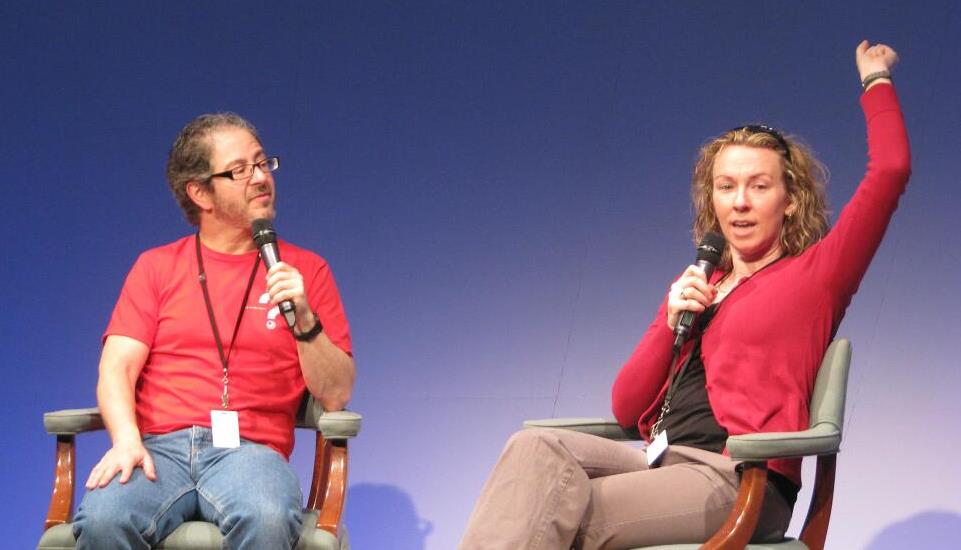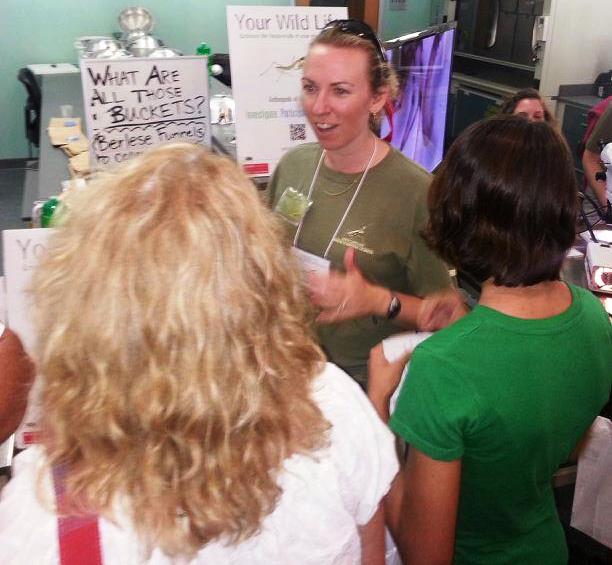What’s the Future of Ecologist-Communicators?
This guest post is by Holly Menninger, Director of Public Science for Your Wild Life at NC State University.
Engage. Communicate. Reach out. Engage. Communicate. Reach out.
These words echoed throughout the hallways of the Minneapolis Convention Center last week like a mantra. From organized symposia to high-energy Ignite sessions, ecologists both urged for and heard a rallying call to cross boundaries during this year’s Annual Meeting – to leave the ivory tower, to connect to policy makers, to connect to educators, to connect to resource managers, to connect to communities.
The battle cry reached a crescendo in the standing-room-only Ignite session on Thursday afternoon: A Conversation on the Future of Ecology.
Past and future leadership of the Ecological Society of America called on us to – in the words of our past president Steward Pickett – be fearless, to connect our science to society.
I’ve been attending the ESA Annual Meeting since I was an incoming graduate student in 2000. More so than any time in the last 13 years, this year’s meeting in Minneapolis featured a sustained waving of rally caps in support of ecologists participating in public engagement, communication and policy, greater than I’ve ever witnessed before.
In fact, I wildly swung my own rally cap during an earlier Ignite session about bridging the gap between basic and applied science – I spoke passionately about the lessons we’ve gleaned from building a successful science outreach and communication program about biodiversity. I suggested approaches that could enhance other scientists’ efforts to connect their science to the public, as required for addressing our planet’s grand environmental challenges.
Continuing the drumbeat at the Future of Ecology session, there was a call for ecologists to learn how to communicate and to recognize that communication is not a one-way transfer of information. Agreed, I thought. But then, as I surveyed the room full of nodding heads, I felt something powerful well up in me. It wasn’t anger. It wasn’t heartburn (although I did have Mexican food for lunch). It was more like that red-faced indignant feeling one gets when one is either deliberately or inadvertently ignored.
I felt ignored because I sensed that many in the room (and those avidly live-tweeting the session) didn’t realize or recognize the awesome pool of communications and outreach talent already within ESA’s membership. The rallying calls for increased and improved science communication seemed aimed squarely at the Society’s mid-to-late career academic scientist crowd, a crowd that has long needed arm-twisting and cajoling to engage the public, not a group that had already embraced public engagement as a core value.
I am a scientist-communicator. It’s my job to connect science to society in clear and compelling ways – whether it is fourth graders at the local elementary school or a national television audience. I work hard to engage the public in the whole process of science. And I’m part of a growing mass of professionals who have graduate degrees in ecology, but are not pursuing an academic or professional scientist career per the traditional pathway of science.
Whether by choice (as was my case) or circumstance (surely, you’ve seen the statistics about the availability of academic jobs), there are MANY of us who’ve carved out meaningful careers where we engage, communicate and reach out to diverse public audiences EVERYDAY. Some, like me, work largely in informal and formal science education – in museums and science centers, in classrooms, on the printed page or
airwaves, and online. Others have applied their talents to addressing science policy issues at the federal, state, and local levels. Still others are based at non-governmental organizations or in Cooperative Extension, moving the outcomes of ecological research directly into the hands of stakeholders and resource managers.
We all engage, communicate and reach out to public audiences in a professional capacity as scientist-communicators. And we’re good at it. We have important skills and expertise that we are willing and excited to share with the members of our professional society – we would be the first to respond to a call to action if we felt that there was a seat at the table for us.
So rather than selecting a few of us to stand up front and give talks or receive awards as rare but exemplary models of crossing the boundaries between science and society, I’d like to see the Ecological Society of America more formally recognize the contributions and potential of all the scientist-communicators. By all means, continue the drumbeat amongst the whole membership to engage, communicate and reach out, but embrace the vital role we scientist-communicators can play in improving communication and engagement across the board. Ask us to help mentor and train those in our ranks who lack the experience or skill-set to effectively engage the public. Partner with us to develop innovative ways to demonstrate the broader impacts of your work. Support the pathways of young ecologists drawn towards communication, outreach and policy. Create a space for us at the Annual Meeting to present and discuss the outcome of our work in more scholarly ways that examine the science of science communication. Recognize our place as important and valued members of this community. We think we have a big role to play in the Society’s next 100 years, where engaging the public and communicating our science will be absolutely essential for addressing the planet’s grand challenges.
Dr. Holly Menninger is the Director of Public Science for Your Wild Life at NC State University. There she coordinates citizen science and online science communication activities related to the biodiversity in our daily lives. An entomologist and ecologist by training, she’s a science communicator by passion and practice. Follow her on Twitter @DrHolly.

